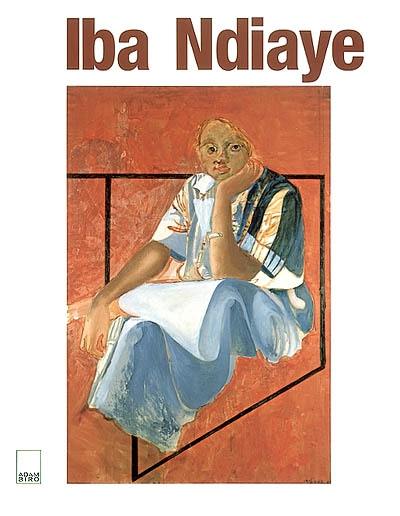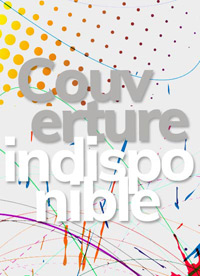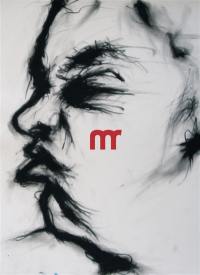
Fiche technique
Format : Broché
Nb de pages : 63 pages
Poids : 420 g
Dimensions : 22cm X 28cm
EAN : 9782876603325
Iba Ndiaye
peintre entre continents
Vous avez dit primitif ?
Quatrième de couverture
L'art contemporain est à la mode. En particulier s'il vient de pays lointains, comme l'Afrique. Mais qui décide de ce qu'est l'art ? Qui octroie la qualité d'artiste ? Selon quels critères ? Force est de constater que près d'un demi-siècle après la décolonisation, les Africains, pour être reconnus, doivent d'une façon ou d'une autre produire un art «primitif», c'est-à-dire naïf, pittoresque, sans technique, coloré, tribal, exotique, comme on voudra.
Les inventions européennes que sont le primitivisme et le bon sauvage ont la peau dure. Iba Ndiaye ne se voit ni bon, ni sauvage, il se voit peintre, tout simplement. On n'est peintre que par rapport à l'histoire de la peinture, par la construction personnelle d'un édifice d'emprunts, de rejets et d'innovations. Ndiaye le sait, qui refuse la douteuse idéologie de la table rase et prend, comme tout artiste véritable, la peinture pour ce qu'elle est : le moyen de trouver sa vérité personnelle, entre l'Afrique d'où il vient et l'Europe où il vit.
Né au Nigéria, Okwui Enwezor est le directeur artistique de la Documenta 11 qui aura lieu en 2002 à Kassel (Allemagne). Il a organisé l'exposition The Short Century, Independence and Liberation Movements in Africa, 1945-1994 qui s'est tenue en mars 2001, au musée Villa Stuck de Munich, à Berlin au Walter Gropius-Bau en mai, puis en septembre au musée d'art contemporain de Chicago et sera en février 2002 au centre d'art contemporain PS1 de New York. Il a été le directeur artistique de la IIe Biennale de Johannesburg en 1997. Enwezor est actuellement conservateur-adjoint pour l'art contemporain à l'Art Institute de Chicago. Il est l'éditeur et le fondateur de Nka : Journal of Contemporary African art, une revue de critique d'art co-éditée par le Centre d'études africaines de l'université Cornell.
Franz-W. Kaiser
Né en Allemagne. Vit à La Haye et à Paris.
Après des études d'art, d'histoire de l'art, d'histoire et de philosophie, il participe en tant qu'assistant à plusieurs expositions en Europe, notamment la Documenta 7 (Kassel 1982), l'exposition d'ouverture au Castello di Rivoli (Turin 1984), la Xe Biennale de Paris (Grande Halle de la Villette 1985)...
Il est ensuite brièvement conservateur au Nouveau Musée de Villeurbanne, puis à Magasin, Centre national d'art contemporain (Grenoble 1986-1989), où il est chargé du programme des expositions et participe à l'élaboration de L'Ecole, une formation de troisième cycle au métier de conservateur. Depuis 1989, il est directeur des expositions au Gemeentemuseum de La Haye, en Hollande.
Dans le cadre de ces responsabilités et indépendamment d'elles, il a été commissaire de nombreuses expositions d'art moderne et contemporain en Europe et ailleurs. Auteur et éditeur de nombreux catalogues, il est aussi auteur de textes théoriques sur l'art et donne des conférences sur ses thèmes de prédilection. Il travaille actuellement à un livre sur la relation qu'entretient l'art avec la réalité, du double point de vue symbolique et socio-historique.
Iba Ndiaye (Saint-Louis, Sénégal, 1928)
Après des études au Sénégal et en France - notamment à l'Ecole nationale supérieure des beaux-arts de Paris et à l'Académie de la Grande Chaumière -, Iba Ndiaye crée en 1959 à Dakar, à la demande du président Senghor, le département «Arts plastiques» de l'Ecole nationale des arts du Sénégal.
De retour en Europe en 1967, il parfait sa formation en visitant, crayon en main, les musées et collections d'art d'Europe et des Etats-Unis. Résidant le plus souvent à Paris, il se consacre entièrement à son travail de peintre et participe à de nombreuses expositions collectives en France, en Allemagne, au Brésil, au Japon, en Corée... Sa première exposition personnelle - à la Maison des Arts de Dakar en 1962 - sera suivie de présentations de son travail en France, en Suède, en Hollande, aux Etats-Unis, en Finlande, en Autriche, au Sénégal, notamment en 1977 au musée Dynamique de Dakar, et en 2000 au Centre culturel Gaston Berger de Saint-Louis, sa ville natale.
En 2001, ses huiles sur le thème du sacrifice du mouton sont sélectionnées pour l'exposition The Short Century, Independence and Liberation Movements in Africa, 1945-1994, présentée à Munich, Berlin, puis Chicago et New York.
Contemporary art is in fashion, particularly if it comes from faraway lands like Africa. But who decides what is art ? Who controls the quality of artists ? According to which criteria ? It is clear that, almost a half-century after decolonization, in order to be recognized, Africans must in one way or another produce art that is "primitive", meaning naïve, picturesque, lacking in technique, colorful, tribal, exotic. The European "inventions" of primitivism and the "noble savage" are difficult to overcome. Iba Ndiaye sees himself as neither noble nor savage. He sees himself simply as a painter. One can only be a painter through one's relationship with the history of painting, by borrowing, rejecting and innovating in order to build a personal style. Ndiaye knows this, and he rejects the dubious ideology of the clean slate. Like any true artist, he sees painting for what it is : the means of finding his own personal identity, which lies between Africa, where he was born, and Europe, where he lives.
Nigerian Okwui Enwezor is the Artistic Director of Documenta 11, Kassel, Germany, 2002. He organized The Short Century, Independence and Liberation Movements in Africa 1945-1994, which opened at the Museum Villa Stuck, Munich, in March 2001 ; at the Berlin Walter Gropius-Bau in May ; and at the Chicago Museum of Contemporary Art in September. This exhibition will open at New York's Contemporary Art Center, PS1, in February 2002. He was also the Artistic Director of the 2nd Johannesburg Biennial in 1997. Enwezor is currently Adjunct Curator of Contemporary Art at the Art Institute of Chicago. He is the publisher and founding editor of Nka, Journal of Contemporary African Art, a critical art journal co-published with Cornell University's African Studies Center.
Franz-W. Kaiser
Born in Germany ; lives in The Hague and in Paris. After studying Art History, Fine Arts, Philosophy and History, he was assistant curator for several European exhibitions, most notably Documenta 7 (Kassel, 1982), the opening exhibition of Castello di Rivoli (Turin, 1984) and the 10th Biennial of Paris (1985). He has served as a curator at the Nouveau Musée de Villeurbanne and the Magasin/Centre National d'Art Contemporain de Grenoble (1986-89), where he was in charge of the exhibition programme and participated in setting up the Ecole du Magasin, a postgraduate training program for curators. Since 1989, he has been Director of Exhibitions at the Gemeentemuseum Den Haag, The Hague, Netherlands. He has curated numerous exhibitions in Europe and beyond. He is the author and editor of several exhibition catalogues, and he lectures and writes theoretical texts on art. He is presently working on a book that examines the specific relation of art to reality from a socio-historical and symbolic point of view.
Iba Ndiaye (Saint-Louis, Senegal, 1928)
Iba Ndiaye studied Art in both Senegal and France, notably at the Ecole Nationale Supérieure des Beaux-Arts in Paris and the Académie de la Grande Chaumière. In 1959, at the request of President Senghor, he founded the Visual Arts department at the Ecole Nationale des Arts du Sénégal.
Upon his return to Europe in 1967, he continued his training by visiting, pencil and sketch pad in hand, museums and art collections throughout Europe and the United States. Residing mainly in Paris, he devoted himself entirely to his painting and participated in numerous group exhibitions in France, Germany, Brazil, Japan, and Korea. His first one-man exhibition was held at the Maison des Arts in Dakar in 1962 and was followed by a series of shows featuring his work in France, Sweden, the Netherlands, the United States, Finland, Austria, and Senegal, including exhibitions in 1977 at the Musée Dynamique in Dakar, and in 2000 at the Centre Culturel Gaston Berger in Saint-Louis, his birthplace.
In 2001, his series of oil paintings on the theme of the sacrifice of the lamb was selected for the exhibition The Short Century, Independence and Liberation Movements in Africa, 1945-1994, to be shown in Munich, Berlin, Chicago, and New York.







